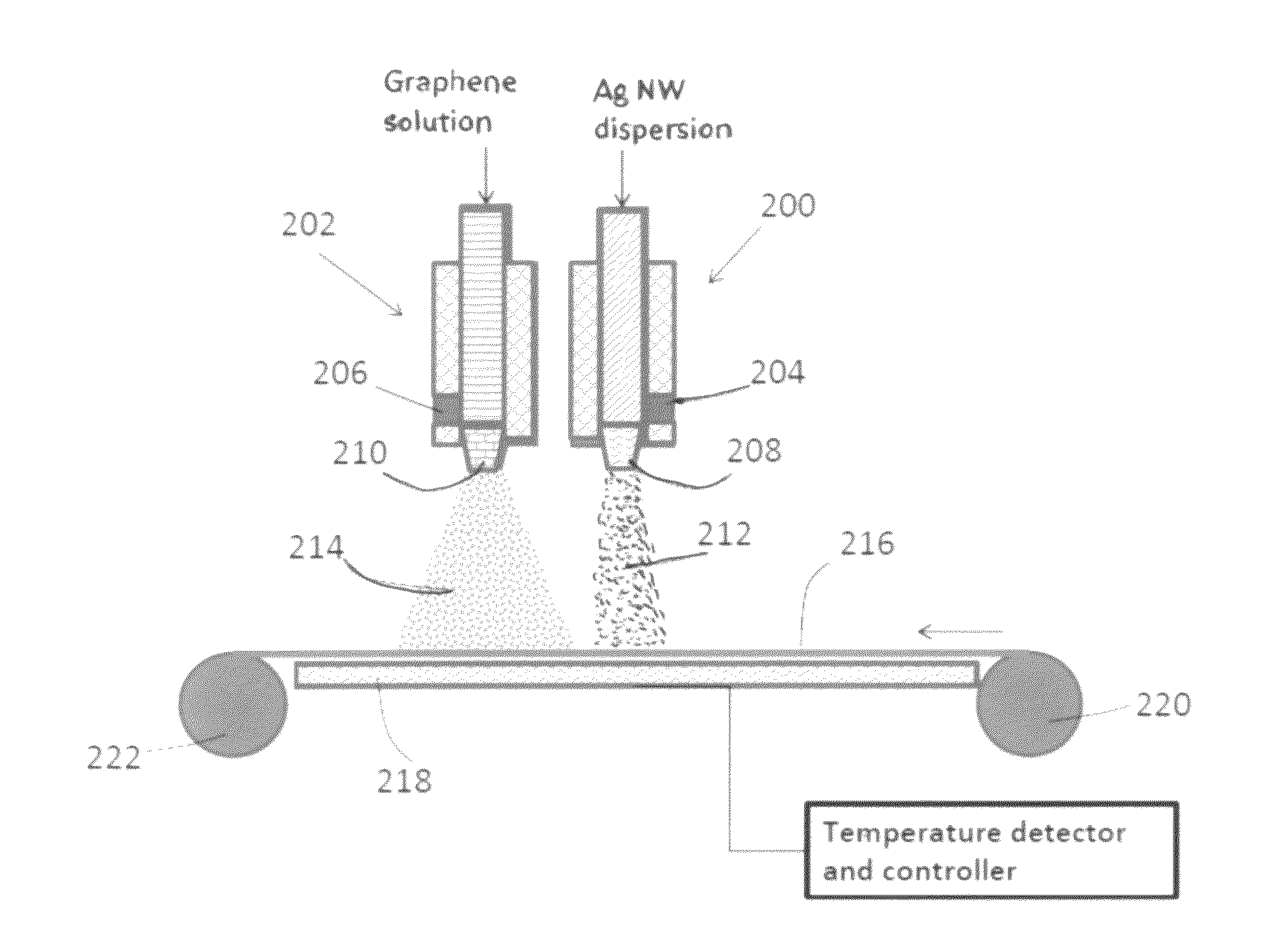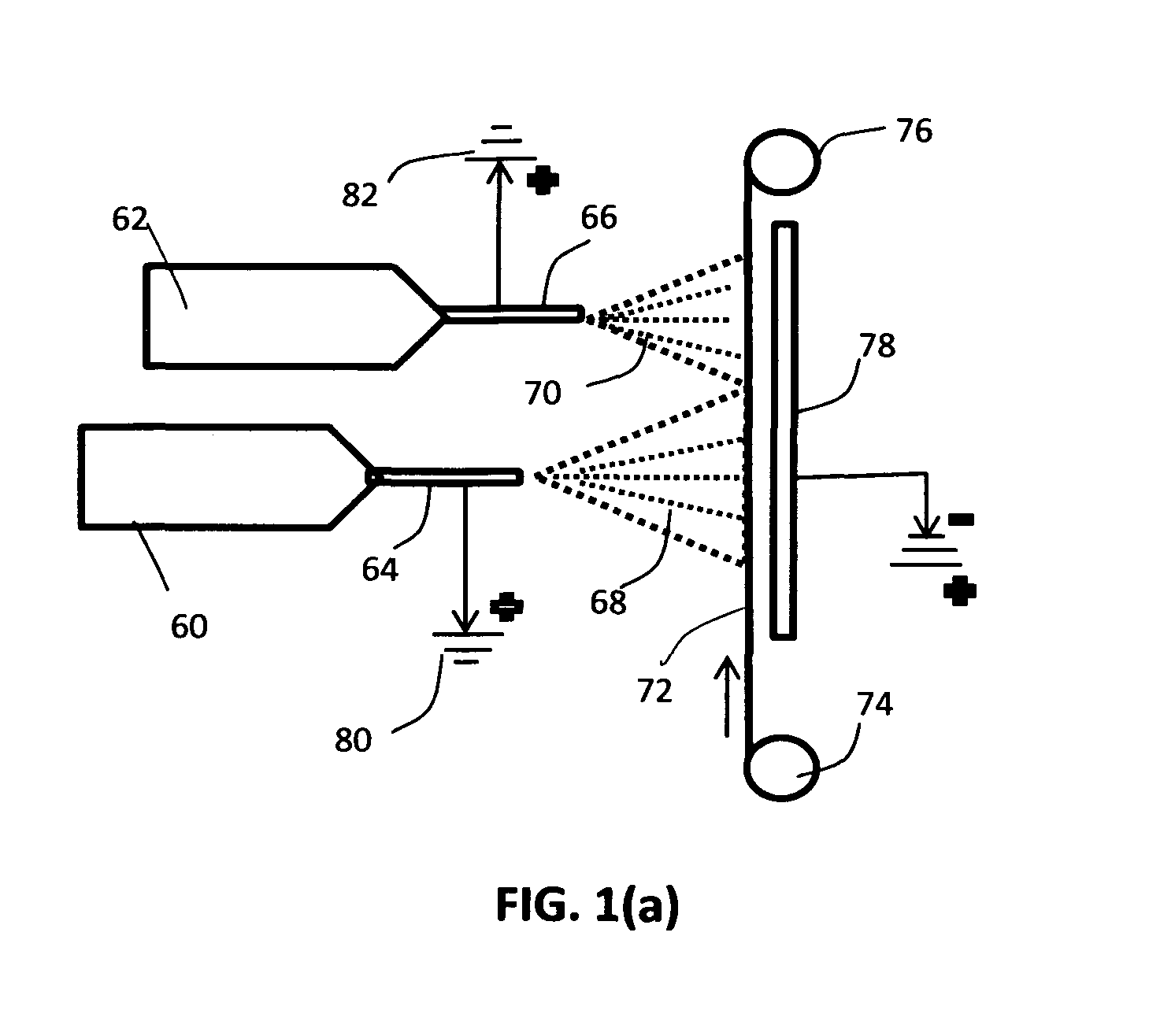Method for producing conducting and transparent films from combined graphene and conductive nano filaments
a technology of graphene and nano-fibre, which is applied in the direction of superimposed coating process, chemical coating, liquid/solution decomposition chemical coating, etc., can solve the problems of high sheet resistance, 10-50 ohms/, and are not suitable for the practical application of transparent cnt electrodes in current-based devices such as organic light-emitting diodes and solar cells. , to achieve the effect of reducing the resistance of the sheet, reducing the speed speed ratio ratio ratio ratio ratio ratio ratio ratio ratio ratio ratio ratio ratio ratio ratio ratio ratio ratio ratio ratio ratio ratio ratio ratio ratio ratio ratio ratio ratio ratio ratio ratio ratio ratio ratio ratio ratio ratio ratio ratio ratio ratio
- Summary
- Abstract
- Description
- Claims
- Application Information
AI Technical Summary
Benefits of technology
Problems solved by technology
Method used
Image
Examples
example 1
Direct Ultrasonication Production of Pristine Graphene from Natural Graphite in a Low Surface Tension Medium
[0095]As an example, five grams of natural graphite, ground to approximately 20 μm or less in sizes, were dispersed in 1,000 mL of n-Heptane to form a graphite suspension. An ultrasonicator tip was then immersed in the suspension, which was maintained at a temperature of 0-5° C. during subsequent ultrasonication. An ultrasonic energy level of 200 W (Branson S450 Ultrasonicator) was used for exfoliation and separation of graphene planes from dispersed graphite particles for a period of 1.5 hours. The average thickness of the resulting pristine graphene sheets was 1.1 nm, having mostly single-layer graphene and some few-layer graphene.
example 2
Preparation of Pristine Graphene from Natural Graphite in Water-Surfactant Medium Using Direct Ultrasonication
[0096]As another example, five grams of graphite flakes, ground to approximately 20 μm or less in sizes, were dispersed in 1,000 mL of deionized water (containing 0.15% by weight of a dispersing agent, Zonyl® FSO from DuPont) to obtain a suspension. An ultrasonic energy level of 175 W (Branson S450 Ultrasonicator) was used for exfoliation, separation, and size reduction for a period of 1.5 hour. This procedure was repeated several times, each time with five grams of starting graphite powder, to produce a sufficient quantity of pristine graphene for thin film deposition.
example 3
Preparation of Pristine Graphene Using Supercritical Fluids
[0097]A natural graphite sample (approximately 5 grams) was placed in a 100 milliliter high-pressure vessel. The vessel was equipped with security clamps and rings that enable isolation of the vessel interior from the atmosphere. The vessel was in fluid communication with high-pressure carbon dioxide by way of piping means and limited by valves. A heating jacket was disposed around the vessel to achieve and maintain the critical temperature of carbon dioxide.
[0098]High-pressure carbon dioxide was introduced into the vessel and maintained at approximately 1,100 psig (7.58 MPa). Subsequently, the vessel was heated to about 70° C. at which the supercritical conditions of carbon dioxide were achieved and maintained for about 3 hours, allowing carbon dioxide to diffuse into inter-graphene spaces. Then, the vessel was immediately depressurized “catastrophically’ at a rate of about 3 milliliters per second. This was accomplished by...
PUM
| Property | Measurement | Unit |
|---|---|---|
| sheet resistance | aaaaa | aaaaa |
| impingement speed | aaaaa | aaaaa |
| impingement speed | aaaaa | aaaaa |
Abstract
Description
Claims
Application Information
 Login to View More
Login to View More - R&D
- Intellectual Property
- Life Sciences
- Materials
- Tech Scout
- Unparalleled Data Quality
- Higher Quality Content
- 60% Fewer Hallucinations
Browse by: Latest US Patents, China's latest patents, Technical Efficacy Thesaurus, Application Domain, Technology Topic, Popular Technical Reports.
© 2025 PatSnap. All rights reserved.Legal|Privacy policy|Modern Slavery Act Transparency Statement|Sitemap|About US| Contact US: help@patsnap.com



